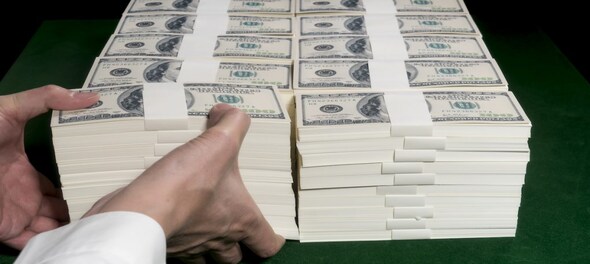
All year, Wall Street pros have been sinking record sums of cash into the world’s largest Treasury ETF in a high-conviction bet that interest rates have peaked. All year they’ve been wrong, with an estimated $10 billion loss — yet that’s not stopping a cohort of dip buyers braving the worst market drawdown in decades.
The big reason: Even a modest rebound in long-dated government debt would spark bumper returns.
Despite signs that inflationary pressures remain — underscored by Thursday’s data — the $39 billion iShares 20+ Year Treasury Bond ETF has attracted a record $17.6 billion so far this year. That’s the third-largest haul among more than 3,300 US-listed ETFs.
The demand has only intensified as the fund’s plunge has deepened, a drop on full display in Thursday trading with a weak auction for 30-year Treasuries adding to the market woes. Price of the said ETF is around 50% lower than its 2020 peak, even if you take into account a short-lived bounce earlier this week as the Middle East conflict sparked demand for havens.
“TLT (ticker symbol) is the posterchild for fighting the Fed — you’re betting that they’re going to crash the economy and be forced to lower rates,” said senior ETF analyst Eric Balchunas. “People using TLT are professionals, it’s not grandma. It’s a pro trade.”
TLT closed 2.7% lower on Thursday, its worst one-day performance since May.
The bullish appetite makes sense when you think of basic investing math. With yields on 20-year Treasuries hovering near 5%, a drop of 50 basis points would deliver a total return of more than 11% over the next 12 months, according to data from F/m Investments. On the flip side, a 50 basis point rise would only result in a loss of about 1.1%.
“The risk-reward for duration is extraordinarily favorable right now and it’s just the bond math,” Karissa McDonough, fixed income strategist at Nottingham Trust, said on Bloomberg Television’s The Close. “If you have just a slight decrease in yields from here for the 10-year, we can talk about a double-digit total return in long bonds and we haven’t seen that in literally years.”
That logic has helped investors keep the faith through a brutal year for bond bulls amid elevated price pressures and increased Treasury supply. Bloomberg Intelligence estimates that more than $10 billion of cash has been burned by TLT this year, judging by the fund’s current assets relative to its lifetime flows, the third most of any ETF in 2023.
While the entire Treasury curve stands to benefit from a downdraft in yields, the long end’s higher duration — a measure of a security’s sensitivity to interest-rate changes — would act as a big fuel for returns. The potential payoff isn’t nearly as extreme in shorter-dated debt. With two-year yields trading near 5.07%, a 50 basis point jump would still produce a return of about 4.6% given how elevated yields are right now. That gain grows to 5.5% should rates drop by 50 basis points.
“The overall rate is big enough that you make such a meaningful return on the cash flow that now you’re actually paid to take on the longer-term risk,” said Alexander Morris, F/m’s president and CIO. “If you want to earn this, you’re going to have to accept some short-term volatility that’s amplified by the duration factor, but if you bought in today, you’d get this experience and it doesn’t exist forever.”
Bullishness is also multiplying in the options market in addition to the fund’s inflows. TLT’s open interest for call contracts is close to a 20-year high relative to bearish puts, Bloomberg data show.
Another reason for enduring duration demand: Should the US economy fall into a recession, an ensuing bond rally would cushion portfolios from stock losses.
“We think that adding duration today makes a lot of sense,” said Ben Kirby at Thornburg Investment Management on Bloomberg Television’s The Close. “Typically when you go into a recession, yields will fall by a couple hundred basis points depending how far out the curve you go. You can really have a hedge for your portfolio to offset equity weakness in that case.”
Check out our in-depth Market Coverage, Business News & get real-time Stock Market Updates on CNBC-TV18. Also, Watch our channels CNBC-TV18, CNBC Awaaz and CNBC Bajar Live on-the-go!


Supreme Court says it may consider interim bail for Arvind Kejriwal due to ongoing Lok Sabha polls
May 3, 2024 4:57 PM
10% discount on fare on Mumbai Metro lines 2 and 7A on May 20
May 3, 2024 2:40 PM

